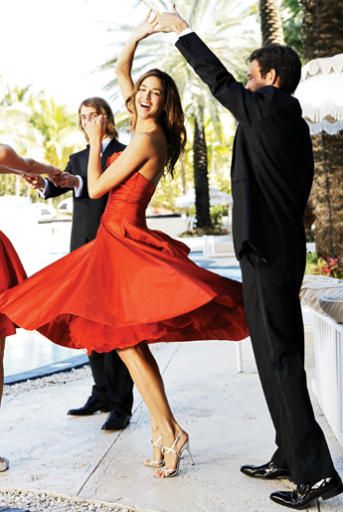
Today we’re talking partnerships. A topic near and dear to my heart. In an industry where people change their partners like they change their socks, I was very blessed to have an enjoyable partnership that spanned over a decade. Drawing on my own experience, as well as sharing nuggets of wisdom from my mentors, I’ve compiled some of the top strategies we implemented to keep our partnership thriving. Your patience often will be tested, but through some mindset shifts, and smart decisions, you can forge a more pleasurable path.
So without further ado, here we go!
1. Know Your Role
In a partnership there are three possible roles:
The lead, the follow, and the instructor…
What the most successful partnerships understand is: whether you’re a lead or a follow, it works best if you only wear one hat. We all can relate to the frustration when driving with a backseat driver; so it goes in dancing. Each role is pivotal to the success of the partnership, but understanding how different the roles are is just as crucial.
*Pro-tip #1: Words have power – if you feel tempted to use these phrases, take a breathe and adjust your sails…
- “(Name of your partner), I think what the teacher is trying to tell you is….
- “When I dance with ______ (someone other than you’re partner) we never have this problem
2. Communication
Communication is a loaded topic, so I’m going to speak to 2 elements:
Goals and Feelings
Let’s start with goals! I have yet to come across a partnership that was 100% aligned in everything. So, it’s very important to find the commonalities you share, and then set goals from there.
Example 1: Does dancing well together in social settings fire you up? Is it the elegance of the smooth dances, or maybe the pulsing of the Latin dances that gets you excited together? And, where do you see yourselves enjoying these skills – groups, parties, nights out on the town?
Example 2: Or maybe you both dream of the bright lights of performance? (Sounds fun!). So now that you know, how many days/week do you want to train together? And, how many events do you want to perform at in a year?
*Pro tip #2 – Include your instructor in on the process, use their experience to bounce ideas off, and help make a plan.
So now that we’re comfortable with setting goals within the partnership –
How do we deal with conflict once it arises?
The BIG thing to remember is:
“Your Partner is a Good-Willed Person”.
Do they want to go off time? No
Are they trying to hang on to you a little tighter when their thinking? No
Is it frustrating to you? Absolutely!
But a little less when you remember they are a good-willed person, trying their best to learn how to do their role in the partnership.
I’m not saying grin and bear it, I’m just suggesting a little patience, and kind explanation goes a long way.
3. Respect Each Other’s Learning Styles
We all learn a little different, and this is a gooooood thing! It enables us to pick up on thing’s they other learning styles might miss. My dance partner was 99% visual; well I was majority kinesthetic, with analytical tendencies. It was a process to learn patience when our instructors would be speaking into one of our learning styles and not the other. But, ultimately, it helped enhance each other’s skill set, that was not naturally our strengths.
4. “A Little Alone Time Never Hurt Nobody”
You know that expression “absence makes the heart grow fonder”? Let’s play with that a bit…
In dancing, that phrase would read something like this:
“Private lessons without your partner are the building blocks to a healthy partnership with them.”
A bit wordier then the original, I know, I know… but I hope you catch my drift.
To wrap up, I wanted to quickly shed some light on how our first three points benefit from having one-on-one instruction.
- In terms of learning your role on how to lead or follow, dancing with an expert enhances your ability to dance with your own partner. Making you clearer, more receptive, and much more pleasurable to dance with!
- When it comes to goal setting it is natural to have different desires within a partnership. Sure, it’s great if your partner shares the same interest, but if they don’t, no biggie, your dance goals don’t have to end. Connect with them on the common ground you share, without laying burdens on each other of participating in something where your interest is not matched.
- Lastly, and to take us home, having your own lessons with an instructor helps you learn quicker by giving you undivided attention to your own learning style. Rack their brains with those super juicy analytical questions that drive your partner batty. Then use what you learned and knock your partners socks off with your new found skills!
Like always I LOVE to hear your feedback. What resonates with you, and what challenges you?
Till next time,
![]()


